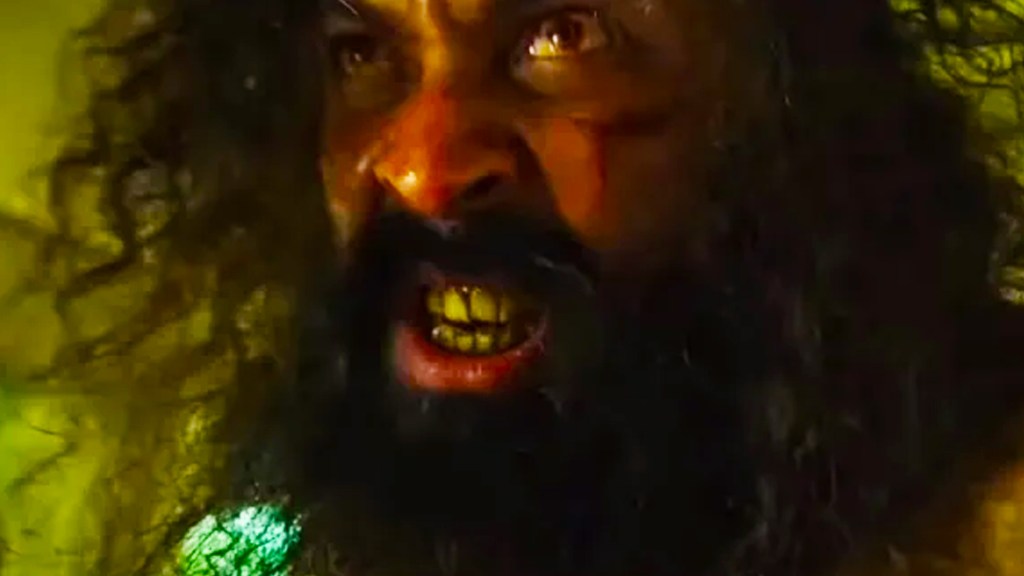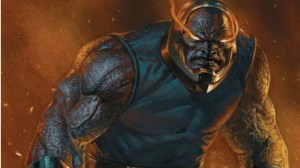28 Years Later is the beginning of a whole new trilogy set in the post-apocalyptic world of 28 Days Later. Oscar-winning director Danny Boyle and writer Alex Garland have taken their original vision of UK civilization falling to the outbreak of the Rage Virus and the hyper-rabid zombies it creates. After nearly three decades, England has become a very different kind of (dead) nation, and 28 Years Later contains some startling reveals about what has happened to both the infected and scattered pockets of humanity, in that time.
Videos by ComicBook.com
Of course, 28 Years Later is really just an introduction to the considerable amount of world-building that Boyle and Garland are doing with this new set of films. The next film, 28 Years Later: The Bone Temple, will presumably show us a whole lot more about what happens when the various disparate factions populating this hellish world inevitably collide in conflict. After viewing the first film, and picking up on various clues and foreshadowing, there’s now a growing theory that The Bone Temple and the proposed third and final film of the trilogy could have a massive twist in story, that completely flips the premise of the franchise (and the sub-genre) on its head.
The 28 Days Later franchise has always been markedly different than virtually every other zombie-horror story in that the source is a virus, one that the series never explicitly states is capable of resurrecting the dead. That’s why it’s always a debate among horror purists whether 28 Days Later and its sequels actually qualify as “zombie-horror.”
Putting that debate aside, the infected of this franchise clearly differ from traditional undead zombies in that they retain full control of their motor skills (hence the “fast zombies” that distinguish the franchise). Both 28 Days Later and its sequel, 28 Weeks Later, also put spotlights on infected characters (“Private Mailer” and “Don,” respectively) who clearly retained a portion of their human identities and intellects, personally stalking and/or killing people who had been close to them before. The rate of the infection and the unrelenting savagery of the infected have made it all but impossible to envision a scenario where the afflicted people get rounded up and corralled until a cure could be studied, discovered, and implemented. The collapse of most UK societies has also made the notion of there being dedicated scientific research teams, or health care teams, working on a cure seem laughable.
But what if, uh, nature were to, uh, find a way?
The Alphas Are Game-Changers

The main “big bads” of 28 Years Later are none other than the “Alpha” males of the infected, most notably the one who is nicknamed “Samson” ( by former doctor-turned-death-cultist, Dr. Ian Kelson (Ralph Fiennes). Samson appears in the film almost like a deadly force of nature, chasing down intended victims in his sights, with few options for deterring or killing him. However, unlike the “Berserker Alpha” (Chris Gregory) seen at the beginning of the film, “Samson” seems to have a deeper intelligence and a more purposeful agenda.
When Spike (Alfie Williams) and his mother, Isla (Jodie Comer), encounter a pregnant infected woman in an abandoned train car, Isla helps the woman complete her birthing and cuts the umbilical cord before the child gets infected. Samson comes to check on what is seemingly his mate and his offspring, and subsequently spends the remainder of the film pursuing Isla and Spike for taking the child. Samson goes so far as to invade Dr. Kelson’s territory and attack the doctor after Kelson saved Spike, Isla, and the baby from Samson’s pursuit by tranquilizing the brute with a morphine dart. Ultimately, Spike delivers the infant (named “Isla” after his dead mother) back to his island home of Lindisfarne, before returning to the mainland to explore it on his own. That leaves a major dangling plot thread for 28 Days Later: The Bone Temple to pick up on.
Theory: 28 Years Later Sequels Will Reveal That The Infected Are Becoming Civilized

This first film didn’t go out of its way to make the story thread about Spike, Isla, the baby, and Samson a major focus of the second and third acts: even though we neve get all the finer details explained, it’s clear that there is some kind of deeper significance to baby Isla’s birth. The current running theory is that Samson’s true purpose in all this is much more altruistic than anyone thinks: he is looking to repopulate the mainland and rebuild a society (of sorts).
The finer details don’t quite come into clear focus with this early theory. 28 Years Later clearly foreshadowed the communal (pack) behavior the infected exhibit under and Alphas leadership, (via all those night vision segments of the infected that were spliced into the movie); and yet, we have no idea how a healthy infant would’ve fit into that group, or if the Alpha would’ve known how to protect it properly. We similarly don’t know for sure, yet, if baby Isla is a “human” in the fully traditional sense; for instance, 28 Weeks Later established lore that humans with unique genetic quirks can be carriers of the Rage Virus without turning feral. Who’s to say Baby Isla isn’t like that? Or that she won’t prove to be some new form of being that has evolved out of the Rage Virus, mixing with human physiology and mutating over time into something with human consciousness and the enhanced strength and speed of an infected?
Even if Lil’ Isla is just a baby, her birth is still monumentally significant; 28 Years Later suggests in multiple ways that the infected could potentially organize themselves into a sustainable tribe or society (however primitive), and that their humanity isn’t as far gone as the world has assumed. That raises massive new questions and some grim implications for how the isolationist peoples of Lindisfarne, or the mad cult of “Jimmy” (Jack O’Connell), could end up being the real “savages” who tear down any attempt to rebuild a civilized world. It’s the sort of twist in perspective that could help Boyle and Garland pull off one of the greatest and most distinct apocalyptic sagas ever.
28 Years Later is now in theaters.









